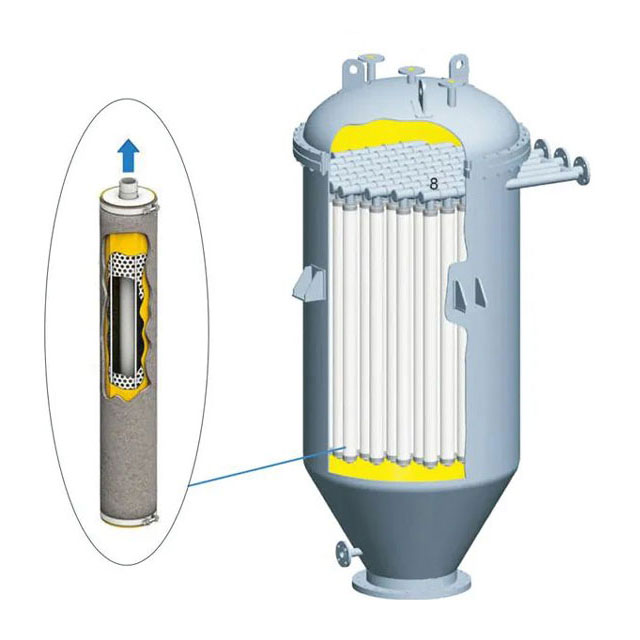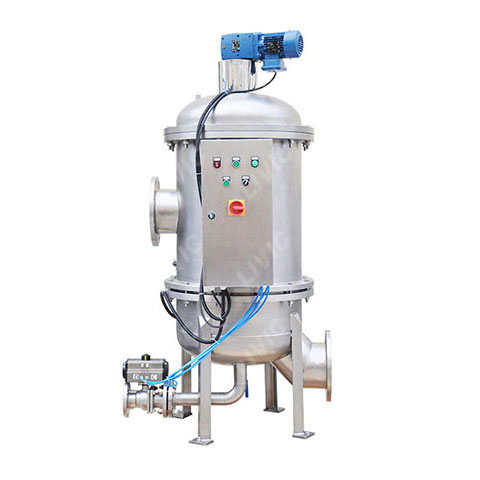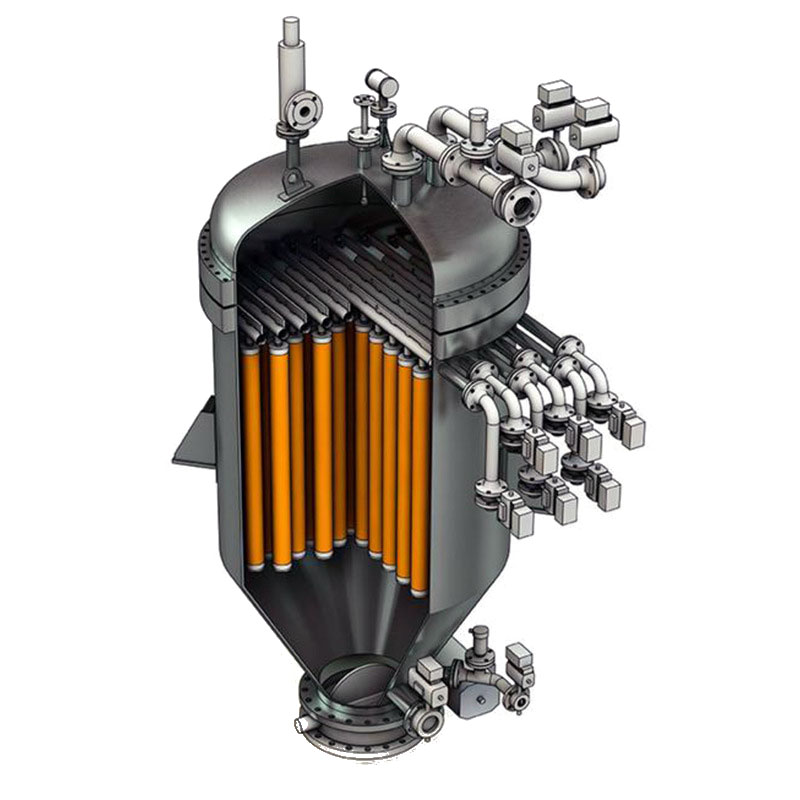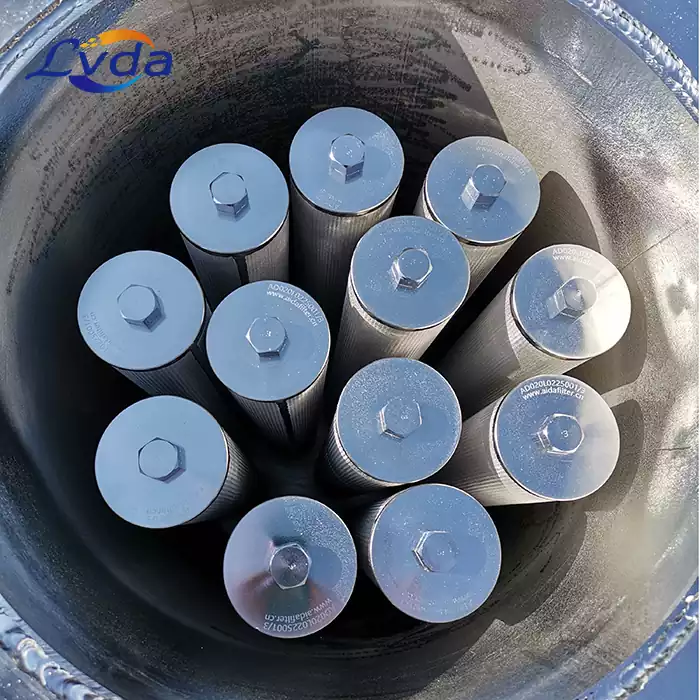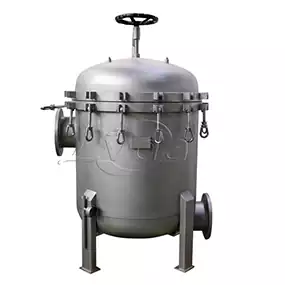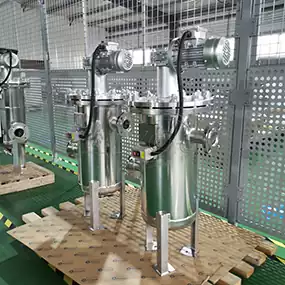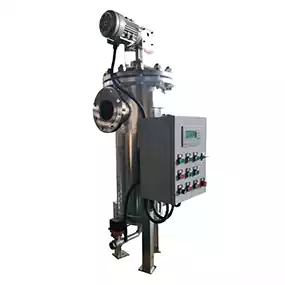Product Details
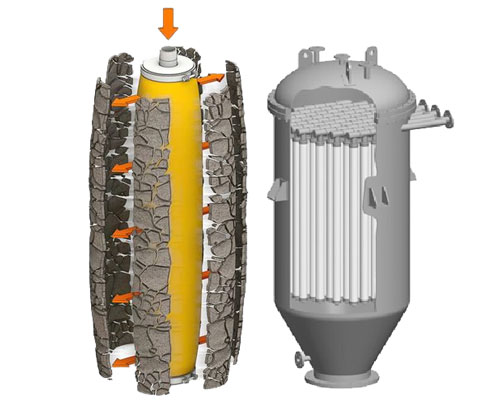
The Candle Filter stands out as an innovative self-cleaning filtration system meticulously engineered for the intricate task of solid-liquid separation. Its specialized design is tailor-made for the clarification and recovery of liquids featuring low solids content, ranging from 5% to less than 1%, and even adeptly handling trace amounts of solids.
Setting itself apart with advanced functionality, the LVDA Candle Filter goes beyond conventional filtration methods. It seamlessly facilitates thin-cake batch pressure filtration, showcasing its capabilities in cake washing, drying, reslurrying, automatic cake discharge, and heel filtration within a pressure vessel. The versatility it offers in cake discharge, be it as a dry cake, wet cake, or a concentrated slurry, underscores its adaptability to diverse industrial processes. With a range that spans from a modest 0.17 m² to an impressive 200 m², these units are tailored to meet a variety of filtration needs.
A testament to its global applicability, Candle Filters find deployment in clarification and recovery processes for liquids with low solids content, addressing the spectrum from 5% down to parts per million (PPM) levels. This diverse range of applications showcases the filter's adaptability and efficiency across various industrial landscapes.
The LVDA filter candles are not just components; they are engineering marvels designed for high liquid flow with minimal pressure drop. The refined process of cake discharge involves the distribution of gas, gently expanding the filter sock for optimal efficiency. Materials of construction are selected with precision, encompassing stainless steels, alloys, and plastics. Vessels, too, can be lined with EPDM, Halor, PTFE, and other materials, ensuring compatibility with a wide array of liquids and operating conditions.
The filter media is equally diverse, incorporating synthetic materials such as woven polypropylene, PTFE, Nylon, Polyester, among others. This selection guarantees a clean removal efficiency reaching as low as 0.5 microns, showcasing its ability to handle fine particles. As the cake accumulates, removal efficiencies improve to less than 0.5 microns, demonstrating its sustained filtration precision.
For enhanced performance in challenging filtrations, the Candle Filter welcomes the use of filter aid as a precoat and/or body feed, particularly beneficial for sticky products or those with demanding filtration requirements. In essence, the Candle Filter emerges as a versatile and indispensable asset, combining cutting-edge design with a spectrum of applications to meet the evolving needs of modern industrial processes.
Structure
Candle filter is composed of a filter housing, filter bags, filter elements,
registers, a computer control system, accessories, etc.
The filter housing is provided with instrument connection nozzle, air vent,
inlet nozzle, discharge nozzle, inspection hole, etc.
Candle filter consists of multiple combined filter elements inside. Every
filter element is composed of 6 porous metal tubes and a central tube and then
covered with a filter bag. The filter bag is selected according to the
characteristics of the raw material liquid. Filter aids are required when
filtering some special raw material liquids, such as activated carbon,
diatomaceous earth, etc. Filter elements are used to support filter bags, and
all filter elements are connected to the register at the top of the filter.
Working Principle
Filter aids are added into the liquid to be filtered. The liquid flows
through the filter bag and flows from porous metal tubes to the central pipe.
Filter bags are attached to the outer surface of filter elements due to
pressure. Due to its unique structure, it offers an enlarged filter area. As the
liquid circulates, a porous filter cake (precoating) is formed on the surface of
the filter bag. The filter cake makes the filtrate get further filtration.
When the filter cake accumulates to a certain thickness and the differential
pressure reaches the preset value, the control system gives a signal, and the
filter stops feeding and empties the residual fluid. The filter is then filled
with hot gas (air, nitrogen, steam) from the overflow vents at the top of the
filter into the filter, the filter cake outside the filter bag is dried by the
gas.
When the filter cake is dried, inject gas from the register for back
flushing, the filter bag expands and the dried filter cake falls off and is
discharged from the cake drainage nozzle.
When the filter cake is discharged, the nozzle on the register sprays liquid
to clean these filter elements and then enters the next filtration cycle.
Specification
Filter rating: 0.22–100 μm (depends on filter elements and functional
design)
Standard design pressure rating: 0.6 MPa, 1.0 MPa, 1.6 MPa, 2.0 MPa, higher
pressures are available upon request.
Filter bag material: PP, PET, nylon, PPS, PVDF
Filter element material: SS316L, PP, PVDF
Flow rate range: 10–300 m³/h
Filter area: 0.9–60 ㎡, other sizes are available upon request.
Housing diameter: 250–2500 mm
Back flushing differential pressure: 0.2–0.3 MPa
Inlet & outlet size: 2" – 24"
Housing material: SS304, SS316L, carbon steel or customized.
Inner corrosion protection: PTFE, PVDF (suitable for strong acids and bases
and other corrosion resistance requirements)
Cake discharge nozzle: Soft seal or hard seal butterfly valve
Optional automation instrumentation: Differential pressure/pressure
transmitter, filter cake thickness detector, liquid level switch, flow
transmitter, etc.
Candle Filters are best selected in the following instances
When minimum floor space for large filtration areas is required.
When the liquids are volatile and may not be subjected to vacuum.
When there is a risk of environmental hazard from toxic, flammable or
volatile cakes specially secured discharge mechanisms may be incorporated.
When high filtrate clarity is required for polishing applications.
When handling saturated brines that require elevated temperatures the tank
may be steam jacketed.
When the cake may be discharged either dry or as a thickened slurry.
They should be selected with care
When the cake is thick and heavy and the pressure is not sufficient to hold
it on the candle.
When coarse mesh screens are used the filtration step must be preceded with a
precoat to retain cakes with fine particles. Precoating with a thin layer of
diatomite or perlite is not a simple operation and should be avoided whenever
possible.
Advantages
Excellent cake discharge.
Adapts readily to slurry thickening.
Minimum floor space.
Mechanically simple since there are no complex sealing glands or
bearings.


